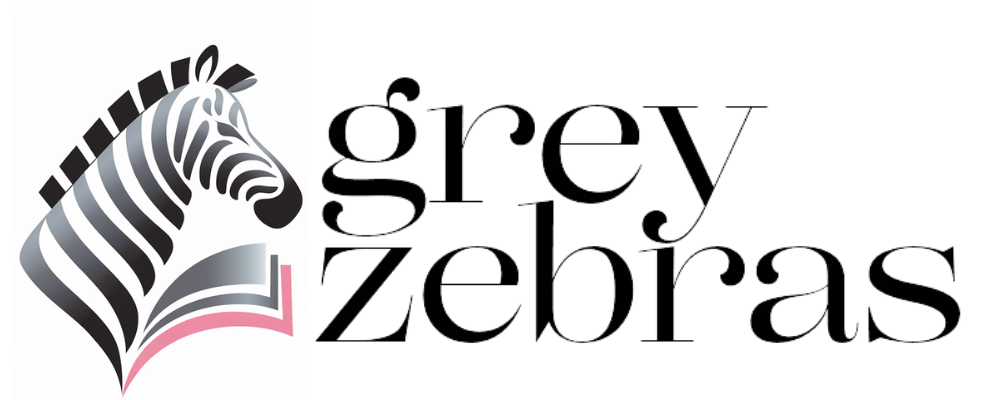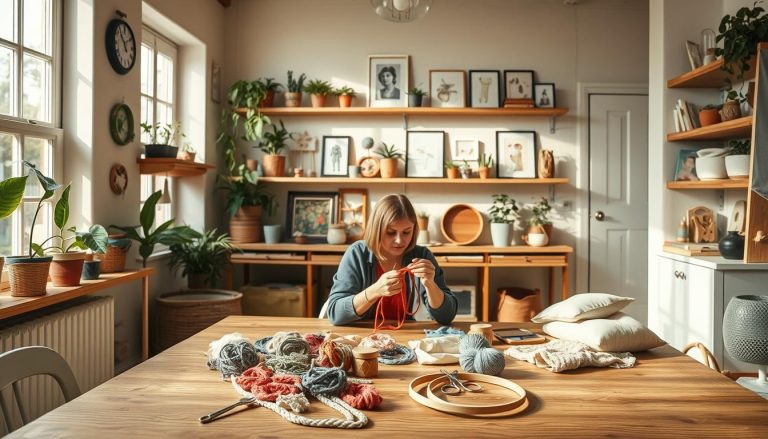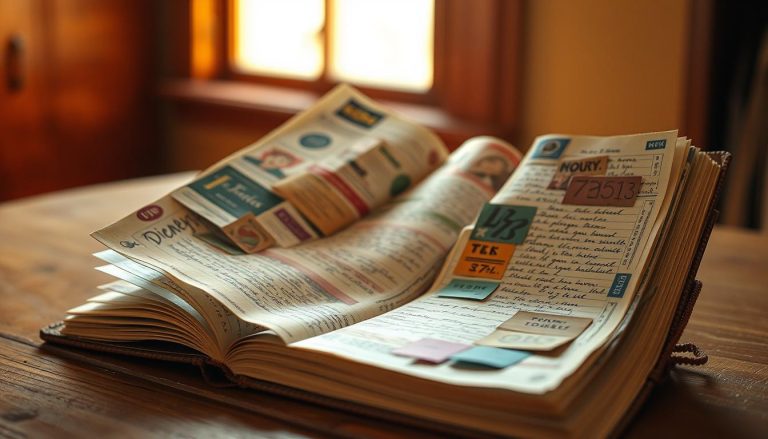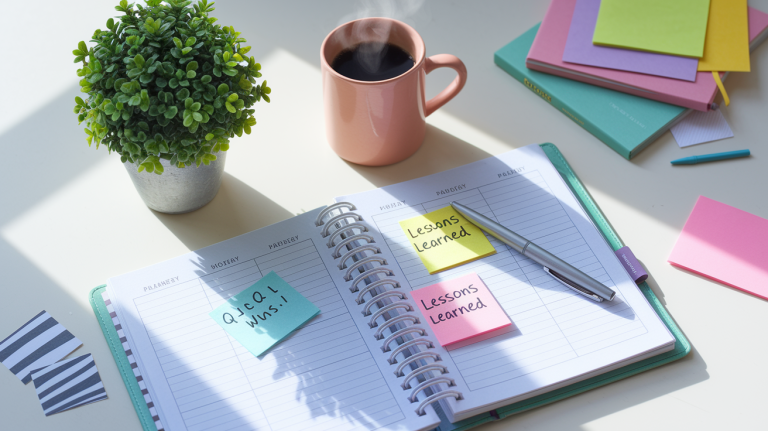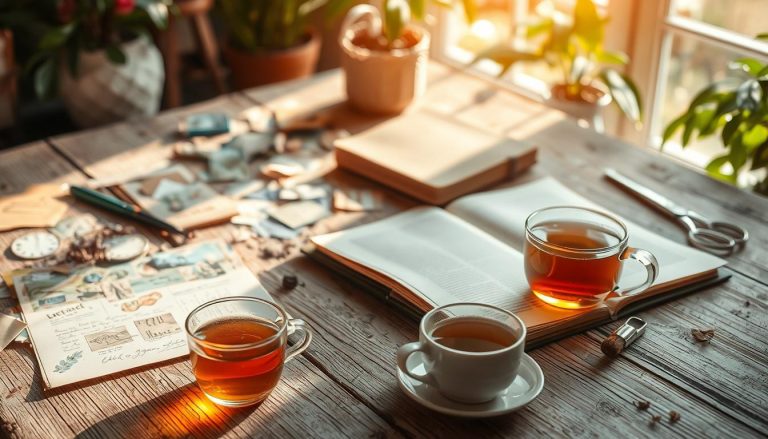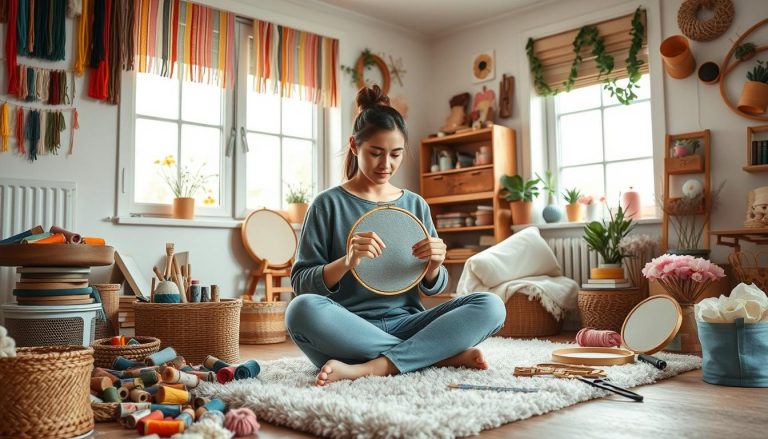15 Must-Have Tools for a Beautiful Junk Journal
Junk journaling is a creative and therapeutic hobby that involves crafting a unique journal using various materials. To create a beautiful junk journal, you’ll need the right supplies. The journey of crafting a junk journal is a fun and rewarding experience, allowing you to express your creativity and produce a one-of-a-kind piece.
The right Junk Journal supplies can make all the difference in your crafting journey. From Essential Junk Journal items like paper and glue to embellishments and decorative elements, having the right tools is crucial for creating a journal that’s both visually appealing and meaningful.
Key Takeaways
- Understanding the basics of junk journaling
- Identifying the essential supplies needed
- Learning how to choose the right materials
- Discovering tips for creating a unique journal
- Exploring ways to embellish and decorate your journal
Grab 50 FREE Mental Health Clip Art
Understanding Junk Journaling: What You Need to Know
At its core, junk journaling is about transforming ordinary materials into extraordinary keepsakes. This creative hobby has gained popularity for its unique blend of artistry and personal expression. Junk journaling involves crafting journals from a variety of materials, including recycled papers, fabric scraps, and other ephemera, making each journal a one-of-a-kind piece.
Junk journaling is not just about creating beautiful journals; it’s also about the process. It allows individuals to express their creativity freely, experimenting with different textures, colors, and embellishments. As Sarah, a junk journaling enthusiast, notes, “Junk journaling is therapeutic; it lets me unwind and bring my ideas to life in a tangible way.”
The history of junk journaling is rooted in the art of mixed media and collage. It draws inspiration from various art forms, including scrapbooking and altered books. The hobby has evolved over time, incorporating new materials and techniques, making it a dynamic and ever-changing art form.
Junk journaling appeals to a wide range of people, from crafty individuals to those looking for a new hobby. It’s particularly popular among those who enjoy DIY projects and are drawn to the idea of upcycling and repurposing materials. As one junk journaler puts it, “I love junk journaling because it’s a way to give old materials a new life.”
Some key elements that define junk journaling include:
- Using a variety of materials, such as paper, fabric, and found objects
- Experimenting with different techniques, like layering and embellishing
- Creating unique, personalized journals that reflect the maker’s personality
For those interested in exploring junk journaling, there are numerous resources available, including online tutorials, workshops, and communities. These resources provide inspiration, guidance, and support, helping newcomers to get started on their junk journaling journey.
As junk journaling continues to grow in popularity, it’s clear that this hobby offers more than just a creative outlet. It provides a means of self-expression, a way to document memories, and a method for crafting something truly personal and meaningful.
Essential Paper Supplies for Your Junk Journal
The foundation of a beautiful junk journal lies in its paper supplies, which can range from scrapbook paper to vintage documents. The variety of paper you choose can greatly impact the overall look and feel of your journal, making it essential to select a mix that adds texture, color, and interest.
Types of Paper to Consider
When it comes to junk journaling, the types of paper you can use are vast and varied. Some popular options include:
- Scrapbook paper, which comes in a wide range of patterns and colors
- Music sheets, adding a touch of elegance and nostalgia
- Vintage paper, such as old book pages, letters, and documents
- Cardstock, for added durability and texture
- Tissue paper, for a delicate, translucent effect
Using a mix of these paper types can add depth and visual interest to your journal. For example, combining scrapbook paper with vintage documents can create a unique and captivating aesthetic.
Where to Source Unique Paper
Finding the right paper supplies is a crucial part of the junk journaling process. Some great places to source unique paper include:
- Thrift stores and antique shops, where you can find vintage documents and papers
- Craft stores, which typically carry a wide range of scrapbook paper and cardstock
- Online marketplaces, such as Etsy and eBay, where you can find specialty and hard-to-find papers
- Your own attic or grandmother’s old trunks, which can be treasure troves for unique and vintage papers
How to Combine Different Textures
Combining different textures is key to creating a visually appealing junk journal. Here are some tips:
- Mix smooth papers with rougher textures, like cardstock or handmade paper
- Combine glossy papers with matte finishes
- Add some transparency with tissue paper or tracing paper
The key is to experiment and have fun with different combinations. Don’t be afraid to try new things and see what works best for your journal.
| Paper Type | Texture | Best Use |
|---|---|---|
| Scrapbook Paper | Smooth, varied patterns | Backgrounds, embellishments |
| Vintage Documents | Rougher, aged texture | Adding historical feel, journaling cards |
| Cardstock | Thick, sturdy | Creating sturdy elements, like tabs and inserts |
| Tissue Paper | Delicate, translucent | Adding subtle color, layering |
Writing Tools to Enhance Your Journal
Junk journaling is not just about the materials you use, but also about the writing tools that bring your journal to life. The right writing tools can enhance your journaling experience, making it more enjoyable and personal.
Pens and Markers Recommendations
When it comes to writing tools, pens and markers are essential Junk Journal accessories. For junk journaling, it’s recommended to use a variety of pens and markers that offer different line widths and ink colors. Some popular options include:
- Fine-tip pens for detailed work and writing.
- Brush pens for adding decorative elements and varying line widths.
- Markers for coloring and adding bold statements.
The Importance of Different Ink Types
The type of ink used in your pens and markers can significantly affect your junk journal. Different ink types, such as waterproof, archival quality, or metallic ink, can add unique effects to your journal pages. For instance, waterproof ink ensures that your writing doesn’t smudge when you add water-based elements, while metallic ink can add a touch of elegance.
When selecting Junk Journal supplies, consider the type of ink that will best suit your needs. Some inks are designed to be vibrant and long-lasting, while others may have special properties like being erasable or having a textured finish.
| Brand | Product Type | Ink Type | Tip Size |
|---|---|---|---|
| Sakura | Micron Pen | Archival Quality | 0.1mm – 1.0mm |
| Faber-Castell | Pitt Artist Pen | Waterproof | Fine – Brush |
| Sharpie | Markers | Quick-Drying | Fine – Broad |
| Uni-ball | Signo Pen | Waterproof | 0.18mm – 1.0mm |
In conclusion, the right writing tools can significantly enhance your junk journaling experience. By choosing the appropriate pens and markers and understanding the different types of ink available, you can add depth, personality, and uniqueness to your journal, making it a true reflection of your creativity with the best Junk Journal accessories and Junk Journal supplies.
Crafting Adhesives for Stability
The choice of adhesive can make or break your junk journal, affecting both its durability and aesthetic appeal. Adhesives are a critical component in junk journaling, as they determine how well your pages hold together over time.
Types of Glue to Use
When it comes to junk journaling, there are several types of adhesives you can use, each with its own advantages.
- Spray Adhesive: Useful for large areas, spray adhesive provides a strong bond and is relatively easy to apply.
- White Glue: A popular choice for paper crafting, white glue dries clear and is suitable for most paper types.
- Double-Sided Tape: Ideal for adding embellishments or layering elements, double-sided tape is versatile and mess-free.
“The right adhesive can elevate your junk journal from a simple collection of papers to a sturdy, interactive piece of art.” (Crafting with Adhesives, 2022)
Tips for Avoiding Mess and Wrinkles
To avoid mess and wrinkles when applying adhesives, consider the following tips:
- Apply adhesive sparingly to avoid overflow.
- Use a brush or applicator to control the amount of glue used.
- Allow the adhesive to dry completely before handling the page.
By choosing the right adhesive and applying it with care, you can ensure that your junk journal remains stable and visually appealing.
Decorative Supplies to Add Flair
The use of decorative supplies in junk journaling not only enhances the aesthetic appeal but also adds a layer of personalization.
Decorative supplies are the elements that can transform a simple journal into a unique piece of art. They include a variety of Creative Junk Journal supplies such as washi tapes, stickers, and more, which are essential for adding character to your journal.
Washi Tapes: Functionality and Style
Washi tapes are versatile and come in a wide range of patterns, from simple stripes to intricate designs. They can be used to create borders, add accents, or even as a background element in your journal pages.
Using washi tapes effectively can also help in creating a cohesive look throughout your journal by tying together different elements with a common theme or color scheme.
Stickers: Finding the Right Fit for Your Journal
Stickers are another popular decorative supply that can add a playful touch to your junk journal. With countless designs available, choosing stickers that resonate with your journal’s theme or your personal interests is key to creating a cohesive look.
When selecting stickers, consider the overall aesthetic you want to achieve and pick designs that complement your Junk Journal materials.
By incorporating washi tapes, stickers, and other decorative supplies, you can create a junk journal that is not only visually appealing but also reflective of your personality. Experimenting with different combinations of these supplies can help you achieve a unique look that sets your journal apart.
Tools for Creating Unique Pages
The art of junk journaling is elevated with the use of specialized tools that help create one-of-a-kind pages. These tools not only enhance the aesthetic appeal of your journal but also make the crafting process more enjoyable and efficient.
When it comes to creating unique pages, two categories of tools stand out: punches and die-cutting machines, and stamps and ink pads. Let’s dive into how these tools can transform your junk journaling experience.
Punches and Die-Cutting Machines
Punches and die-cutting machines are essential for adding intricate designs and shapes to your junk journal pages. They allow you to cut out various patterns and shapes from paper, cardstock, and even fabric, giving your journal a personalized touch.
- Circle punches are great for creating uniform circles that can be used as embellishments or as a base for other designs.
- Corner rounder punches can soften the edges of your paper, giving your journal a more polished look.
- Die-cutting machines offer more versatility, allowing you to cut complex shapes and designs with ease.
| Tool | Function | Benefits |
|---|---|---|
| Circle Punches | Create uniform circles | Adds a uniform touch to your journal |
| Corner Rounder Punches | Round the corners of paper | Gives a soft, polished look |
| Die-Cutting Machines | Cut complex shapes and designs | Offers versatility and precision |
The Magic of Stamps and Ink Pads
Stamps and ink pads are another crucial element in junk journaling, allowing you to add custom messages, patterns, and designs to your pages. They can be used to create a variety of effects, from subtle textures to bold statements.
“Stamping is a great way to add a personal touch to your junk journal. You can use it to create intricate designs, add journaling, or simply add a pop of color.” –
When choosing stamps and ink pads, consider the theme and color scheme of your journal. Clear stamps offer versatility and ease of use, while pigment ink pads provide vibrant, long-lasting colors.
By incorporating these tools into your junk journaling practice, you’ll be able to create truly unique and captivating pages that reflect your creativity and style. Whether you’re a seasoned crafter or just starting out, punches, die-cutting machines, stamps, and ink pads are sure to become essential components of your junk journaling toolkit.
Organization Tools for a Seamless Experience
Organization tools play a crucial role in enhancing your junk journaling journey. A well-organized workspace not only boosts creativity but also saves time that would be spent searching for misplaced supplies. In this section, we’ll explore the essential organization tools that can elevate your junk journaling experience.
Storage Solutions for Supplies
Proper storage is fundamental to maintaining an organized junk journaling workspace. Investing in the right storage solutions can keep your supplies tidy and within reach. Consider using:
- Stackable plastic bins for storing paper and embellishments
- Small mason jars for organizing buttons, beads, and other small items
- File organizers for keeping your journaling cards and inserts in order
Labeling your storage containers can further enhance your ability to quickly locate the supplies you need.
| Storage Solution | Description | Benefit |
|---|---|---|
| Stackable Plastic Bins | Ideal for storing paper, cardstock, and other flat supplies | Keeps workspace clutter-free |
| Small Mason Jars | Perfect for organizing small embellishments like buttons and beads | Easy to see contents, easy to access |
| File Organizers | Great for storing journaling cards, inserts, and other paper ephemera | Maintains organization and saves time |
Keeping Your Workspace Organized
Maintaining a tidy workspace is just as important as storing your supplies properly. Establishing a routine can help keep your workspace organized. Here are some tips:
- Clean your workspace at the end of each journaling session
- Use a workspace organizer or mat to define your crafting area
- Keep frequently used supplies in easy-to-reach locations
By implementing these strategies, you’ll find that your junk journaling process becomes more enjoyable and efficient.
Measurement Tools for Precision Crafting
The art of junk journaling requires a combination of creativity and precision, made possible with the right measurement tools. These tools are essential for creating a well-structured and visually appealing journal.
When it comes to precision crafting, two of the most critical measurement tools are rulers and cutting mats. Let’s dive into the importance of each.
Rulers: Choosing the Right Type
A good ruler is indispensable for any junk journaler. It helps in drawing straight lines, measuring paper, and creating uniform borders. There are various types of rulers available, including straight rulers, grid rulers, and flexible rulers. The choice of ruler depends on the specific needs of your project.
- Straight Rulers: Ideal for drawing straight lines and measuring lengths.
- Grid Rulers: Useful for creating grid-based layouts and designs.
- Flexible Rulers: Perfect for measuring curved or irregular shapes.
The Importance of a Good Cutting Mat
A cutting mat is another crucial tool for junk journalers. It provides a protective surface for cutting papers and other materials, preventing damage to the work surface and ensuring precise cuts. A good cutting mat is durable, self-healing, and has grid markings for accurate measurements.
| Feature | Benefits |
|---|---|
| Durable Material | Withstands repeated cutting without losing its integrity |
| Self-Healing Surface | Minimizes damage from cuts, keeping the mat looking new |
| Grid Markings | Facilitates accurate measurements and precise cutting |
By incorporating the right measurement tools into your junk journaling practice, you can enhance the overall quality and aesthetic of your journal. Whether you’re a beginner or an experienced crafter, having the correct Junk Journal supplies and Creative Junk Journal supplies is vital for achieving precision and creativity in your work.
Layering Techniques to Enhance Aesthetics
To create visually stunning junk journals, understanding layering techniques is essential. Layering involves combining different elements to add depth, texture, and visual interest to your journal pages. This technique allows you to experiment with various Junk Journal materials, creating unique and captivating layouts.
Effective layering requires a thoughtful approach to combining different materials and colors. By mixing and matching various textures and hues, you can create a visually appealing narrative that draws the viewer in.
Mixing Materials for Depth
One of the key aspects of layering is mixing different materials to achieve depth. This can include combining paper, fabric, lace, and other textures to create a rich and engaging visual experience. For instance, pairing a smooth paper background with a textured fabric element can add an intriguing contrast to your journal page.
Experimenting with different materials also allows you to incorporate meaningful elements into your journal. For example, you can include pieces of vintage fabric, newspaper clippings, or other memorabilia that resonate with the journal’s theme or your personal experiences.
Balancing Color and Design
Balancing color and design is crucial when layering elements in your junk journal. A harmonious color palette can tie together disparate elements, creating a cohesive and aesthetically pleasing layout. Consider using a dominant color and accenting it with complementary hues to achieve visual balance.
In addition to color, the design elements you choose should work together to create a visually appealing composition. This can involve balancing text and images, using negative space effectively, and ensuring that the overall design flows smoothly. By thoughtfully layering different elements, you can create Junk Journal ideas that are both beautiful and meaningful.
Ultimately, the art of layering in junk journaling is about experimentation and creativity. Don’t be afraid to try new combinations of materials and colors to discover what works best for your journal. With practice, you’ll develop a keen eye for layering techniques that enhance the aesthetics of your junk journal.
Personalizing Your Junk Journal
Making your junk journal truly yours is a matter of personal touch and creativity. It’s about adding elements that make it unique and reflective of your personality or the occasion it’s meant for.
To start personalizing, consider what makes your journal special. Is it a gift, a memory keeper, or a creative outlet? Whatever the purpose, custom embellishments can elevate its significance.
Custom Embellishments
Custom embellishments are a fantastic way to add a personal touch. You can create your own embellishments using various materials like paper, fabric, or found objects. For instance, you can:
- Cut out intricate designs from patterned paper or cardstock.
- Use fabric scraps to create bows, flowers, or other decorative elements.
- Incorporate natural elements like leaves, flowers, or twigs.
These custom elements not only add visual interest but also make your journal more meaningful.
How to Incorporate Photographs
Photographs are a wonderful way to personalize your junk journal, turning it into a treasured keepsake. Here are some tips on how to incorporate them:
- Choose the Right Photos: Select photos that are relevant to the journal’s theme or purpose.
- Use Adhesives Wisely: Use a suitable adhesive that won’t damage the photos over time. Consider using photo corners or adhesive dots.
- Journaling: Add captions or journaling around the photos to provide context and tell a story.
As Sarah, a junk journal enthusiast, once said, “Incorporating personal photos into my junk journal has made it a cherished memory book.”
By incorporating custom embellishments and photographs, you can create a junk journal that is not only beautiful but also deeply personal.
Inspiration and Ideas for Your Junk Journal
The world of junk journaling is vast and varied, offering countless opportunities to find inspiration. As you delve deeper into this creative hobby, you’ll discover that inspiration can come from the most unexpected places.
Resources to Spark Creativity
To keep your junk journaling journey exciting, it’s essential to explore various resources that can spark creativity. Some of these include:
- Nature: Observing the colors, textures, and patterns in nature can be a great source of inspiration.
- Art and craft books: Flipping through books on art, crafting, and junk journaling can provide new ideas.
- Online tutorials: Websites and YouTube channels dedicated to junk journaling and crafting can offer techniques and inspiration.
- Travel: Experiencing different cultures and environments can inspire unique journal pages.
Exploring these resources can help you discover new themes, techniques, and ideas to incorporate into your junk journal, making it truly reflective of your creativity.
Joining Online Communities for Support
Joining online communities dedicated to junk journaling can be incredibly beneficial. These communities provide a platform to share your work, receive feedback, and get inspired by others. Some benefits include:
- Support and encouragement from like-minded individuals.
- Opportunities to participate in challenges and collaborative projects.
- Access to a wealth of shared knowledge, tips, and resources.
By engaging with online junk journaling communities, you can enhance your crafting experience and continue to find new inspiration for your journals, exploring fresh Creative Junk Journal supplies and techniques.
Maintaining Your Junk Journal
To ensure your junk journal remains a treasured keepsake, proper care and preservation are essential. Using the right DIY Junk Journal tools and Junk Journal supplies can make a significant difference in maintaining its condition over time.
Care and Preservation Tips
Handling your junk journal with care is crucial. Avoid exposing it to direct sunlight, moisture, or extreme temperatures, as these factors can cause damage to the materials used in its creation. When not in use, store your journal in a protective cover or box to prevent dust accumulation.
Handling Aging Materials
As your junk journal ages, the materials used may begin to deteriorate. To mitigate this, consider using acid-free and lignin-free paper, along with other archival-quality supplies. Regularly inspect your journal for signs of wear and address any issues promptly to preserve its integrity.
By following these guidelines and utilizing the appropriate DIY Junk Journal tools and Junk Journal supplies, you can enjoy your junk journal for years to come.
